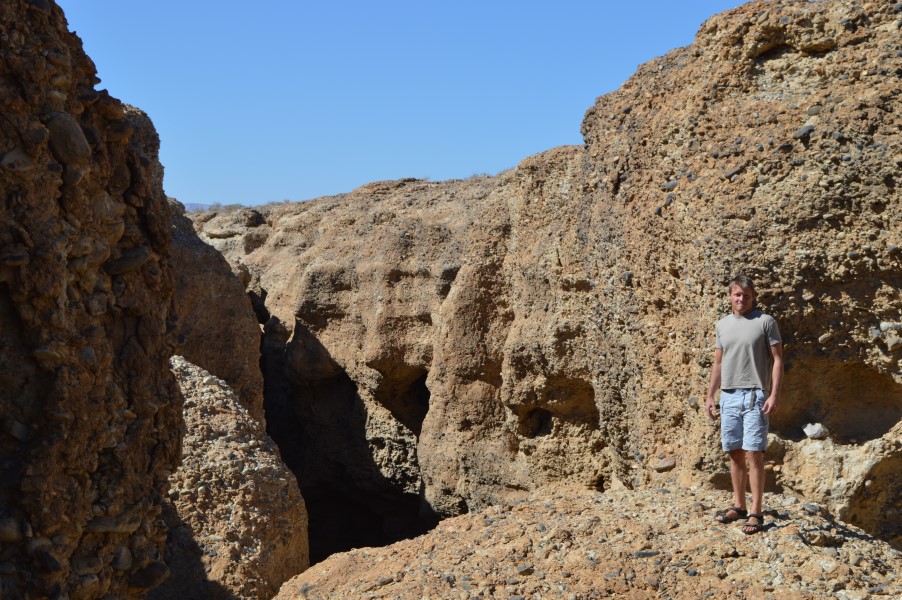Our journey to Sesriem Canyon began early in the morning when I picked up my friend at the Windhoek airport. We would then travel southwest over a section of the Gamsberg Pass to the small town of Sesriem. Traveling over the Gamsberg Pass is indeed an adventure all its own. It was the second time for me and I enjoyed sharing the spectacular journey with my friend.
However, Sesriem town is not a destination in itself. Instead, we were traveling there to do the Sesriem Canyon hike and then travel onward to Sossusvlei Pan. Indeed, these two destinations are strongly related geologically. Additionally, they have the same geologic source in the Naukluft Mountains.
Driving from Windhoek to Sesriem
The route to Sesriem from Windhoek starts out on C26. This is the same starting point as when I took the Gamsberg Pass over to Swakopmund. Take C26 out of Windhoek but this time do not veer to the West. Keep going straight and branch off of C26 going South, then pass on the East side of the Gamsberg Mountain. Then continue until you reach C14 and go left towards Sesriem. Don’t turn right, that would bring you to Walvis Bay.
The drive itself is very simple however, I have left these directions intentionally vague because visitors who want to drive over the pass need to map it out yourself. Indeed, only a fool would rely solely on GPS.
Sesriem Accommodations
There is an assortment of accommodations near Sesriem that are all within a reasonable drive of our destinations. We ended up staying in a small hotel near the Naukluft Mountain foothills. From there, it was a 50 kilometer drive to the Sossusvlei and Sesriem Canyon entry points. We had an easy drive the next morning when we went to explore these areas.
Sesriem Canyon Water Source
After safely arriving at our accommodation we settled in and went out for a bit of exploring. Our lodge was located in the desert savannah at the foot of the Naukluft Mountains. As a result, we went for a walk to enjoy the flora and fauna of the surrounding area.
We first encountered some dried up river beds that serve as important tributaries feeding Sesriem Canyon (more on this below). However, they are only filled with water after it rains heavily in the nearby Naukluft Mountains.

Furthermore, the Naukluft is Afrikaans for “narrow gorges” – narrow (nau) gorges (kluft). The Naukluft Mountains have some great hiking options and I intend to pursue this on my next visit to Namibia.
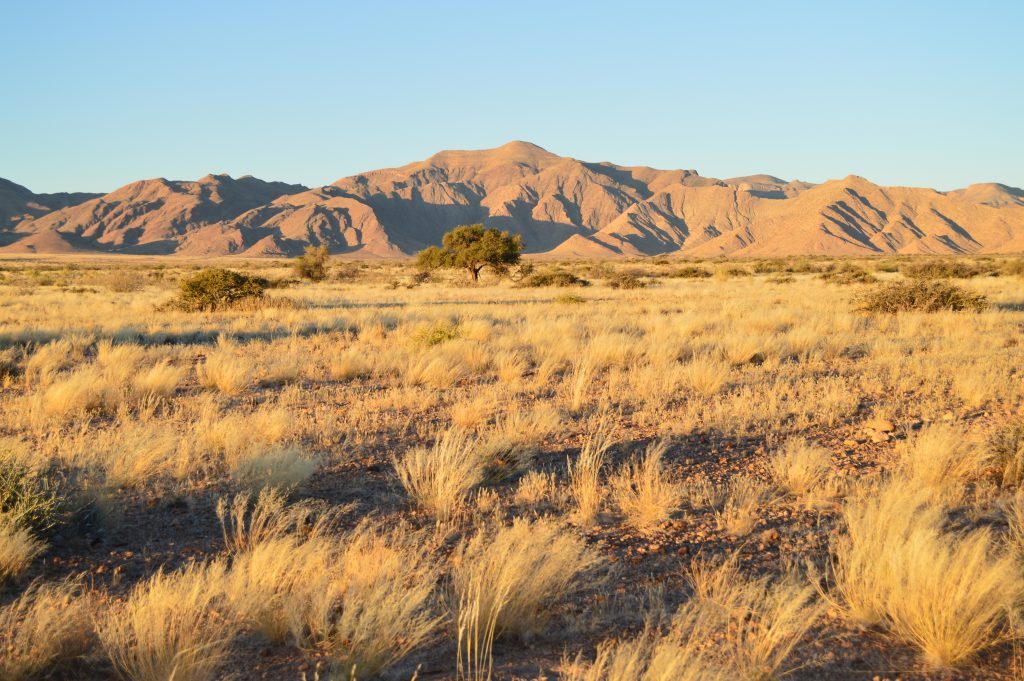
Social Weaver Birds
During our sunset adventure we got a closer look at the giant communal bird nest of the social weaver bird. These birds build giant nest compounds and live together socially, which is a rarity among birds. Additionally, the social weaver bird is considered to be spectacular architect, especially for a bird!
Indeed, the nests are common sight in Namibia, I saw them many times while traveling through the countryside. Furthermore, the social weaver is in the Passeridae bird species family and is native to countries of Southern Africa, specifically found in Namibia, South Africa and Botswana.
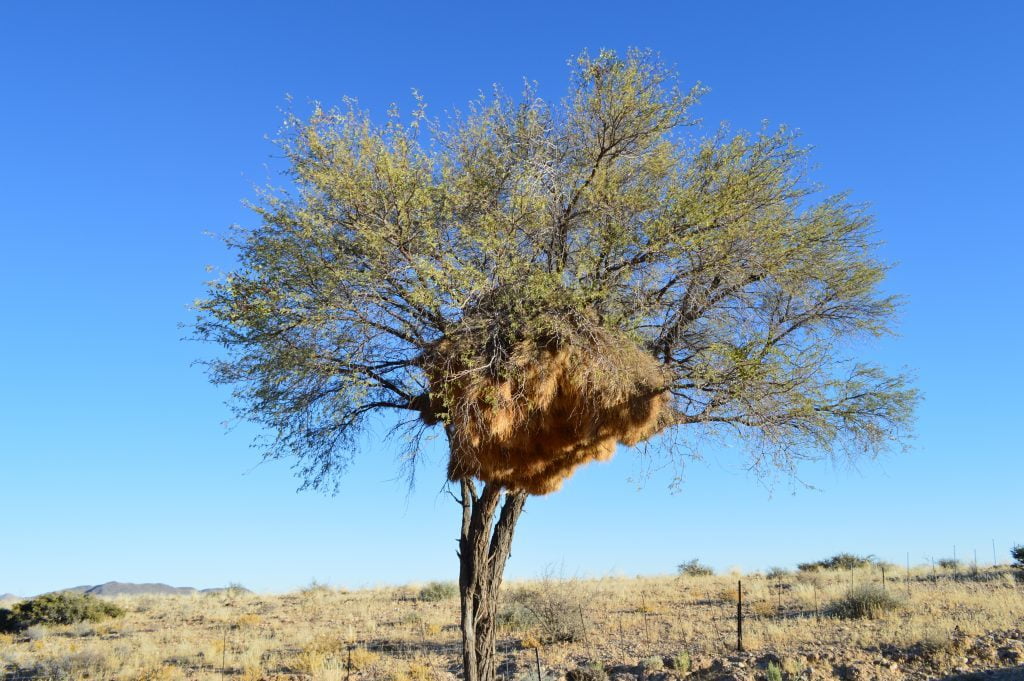
The next morning we set out for the Sesriem Canyon hike adventure. First thing to do is stop by the Ministry of Environment and Tourism office in Sesriem and pay the Sesriem Canyon entrance fee.
History of the Sesriem Canyon
The Sesriem Canyon was named by the first settlers to the area who happened to be Afrikaner. They used 6 lengths of rope to scoop water out of the bottom of the canyon. As a result, the name of the Sesriem Canyon is based on the Afrikaan’s word for six lengths of rope which is “ses rieme”.
However, the availability of water in this area is by no means certain. Indeed, the sporadically flowing Tsauchab River at the base of the Sesriem Canyon is usually bone dry. This is because Tsauchab River flow levels depend on climate conditions in the nearby Naukluft and Tsaris Mountains. It is only during times of heavy rainfall that it flows regularly.
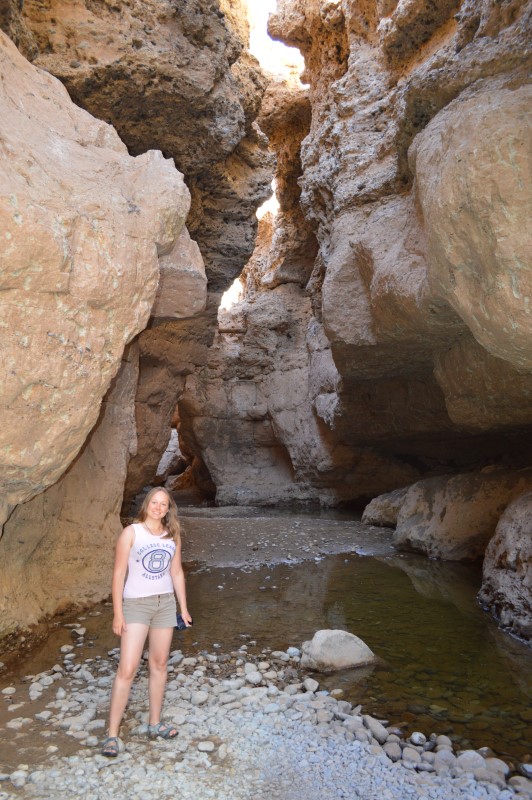
The Sesriem Canyon History
Hundreds of thousands of years ago the Tsauchab river flowed all the way to the Atlantic Ocean. However, in modern times the river only flows sporadically and then only continues about 65 kilometers into the desert before it permeates into the Sossusvlei Pan.
The geological history of the Sesriem Canyon is inscribed on its walls by the Tsauchab River. The history of the area can be observed by descending into the canyon itself. Inside the canyon, you can read the geological layers that have been incised through by the passing water over millions of years.
Furthermore, at the bottom of the canyon you can easily spot the fossilized sand of the Tsondab Sandstone Formation. This is the remains of a 200 meter thick sand desert that covered large parts of Namibia 20 million years ago.
It is fascinating that the sands of today’s Namib Desert (the oldest desert in the world) is actually sitting on the fossilized remains of a 20 million year old desert. Additionally, the Tsondab Sandstone Formation is further exposed in other areas including on the road to Sossusvlei Pan.
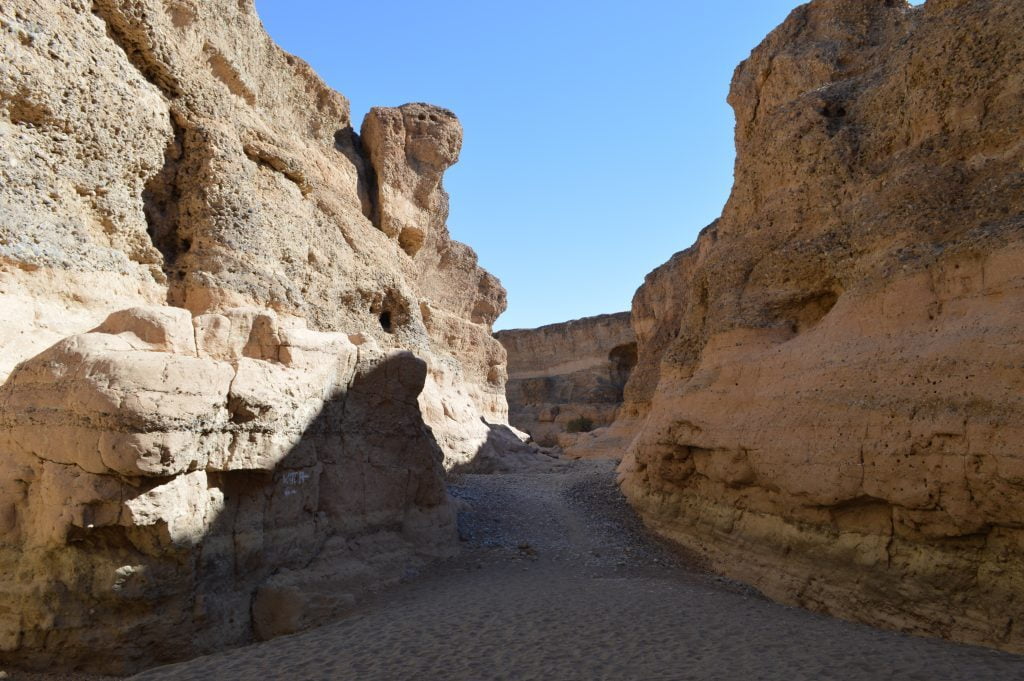
Climate Volatility Created Sesriem Canyon
During the 20 million years since the Tsondab desert existed, the world’s climate has dramatically fluctuated. As a result, the climate moved from extreme arid condition, such as exists today, back to wetter periods, and also ice ages. All of these occurrences effected the severity of the water flowing down from the nearby Naukluft Mountains and escarpment.
During periods of heavy rainfall lots of debris was washed down from the mountains and formed huge alluvial fans. The walls of the Sesriem Canyon have recorded all of these climate changes going back millions of years. Therefore, geologists can read the climate history of the entire region on the walls of Sesriem Canyon.
For example, layers of heavy conglomerate rock indicates periods of heavy rainfall. Evidence of periods of extreme arid conditions are seen by the smaller grained deposits such as the Tsondab Sandstone.

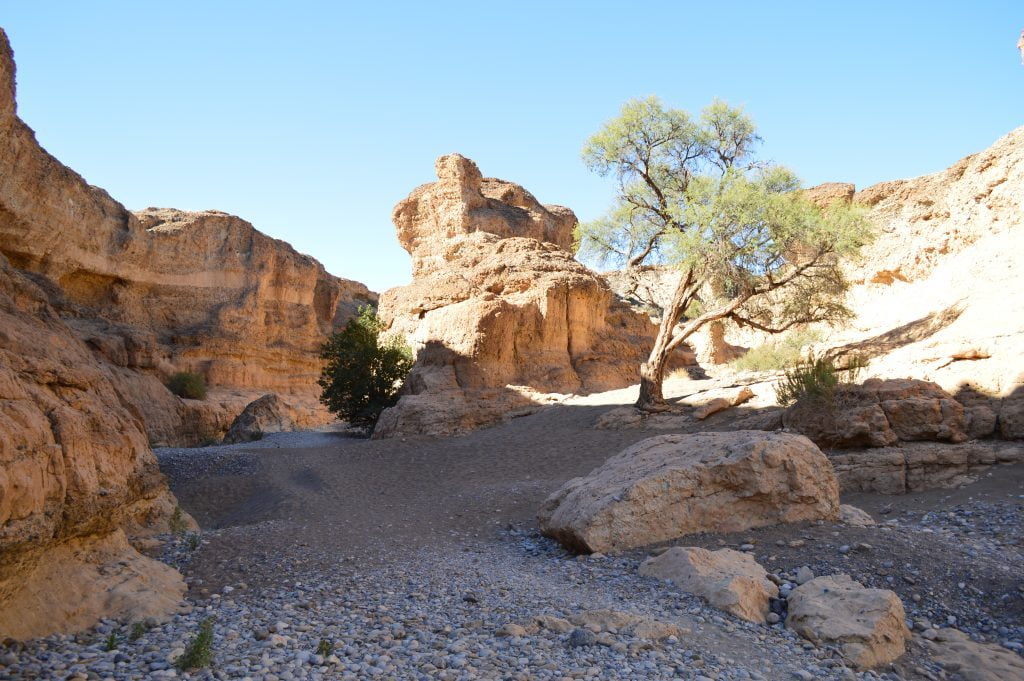
Namibia – Fascination of Geology A Travel Handbook by Nicole Grunert

